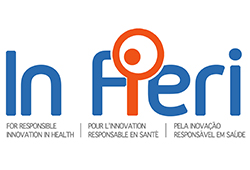The aim of this project was to take stock of the empirical studies that examined the motivations and processes that led to the development of responsible innovations (RIs) that have implications for health and social care.
An article that provides a synthesis of 17 qualitative studies and develops a model of the goals and processes of responsible innovations was published in the journal Innovations-Revue d’économie et de management.

Responsible Innovation (RI) goals and processes model
According to this model, the context of emergence stimulates the development of RI oriented towards a common good, whether it involves broad collective interests (e.g., wastewater treatment) or those of marginalized groups (e.g., making a building accessible to people with disabilities).
Actors include the leaders of the RI project, i.e., the individuals and organizations that design and develop it, and their partners, who may change according to the stage of innovation development (investors, representatives of municipal, regional or national public authorities, suppliers, potential users, community organizations, etc.).
Actors pursue goals that are not all related to a common good and may include particular interests (establishing one’s own network of contacts, developing a market, increasing a city’s influence, etc.). Anchoring refers to the actions through which leaders and partners manage (or not) to increase the relevance of RI along its development, experimentation and appropriation, and this is achieved by reconciling the goals pursued.
Resource work is characterized by both ideological and material flexibility. This process combines three activities that enable the production of RI by promoting learning, collaborative work within networks and the emergence of a protective “niche.” It is indeed important to create a material and socio-cultural space that allows a RI to develop and establish its place on the market despite —or thanks to— its non-standard character. To the opposite, letting established market forces play out without working on the conditions of the construction and reception of a given RI reduces its possibilities of emergence.
Ultimately, RIs can succeed in occupying a market of their own by remaining a unique case, by being reproduced (for example, a bike-sharing system is set up in another city) or by being more widely and institutionally diffused (a mass-produced electric car captures a market segment). In this way, RI contributes to modifying its context of appropriation, making it more conducive to the deployment of activities that consolidate its anchoring.
Former Project Lead: Geneviève Daudelin
Contact for the project: Pascale Lehoux


